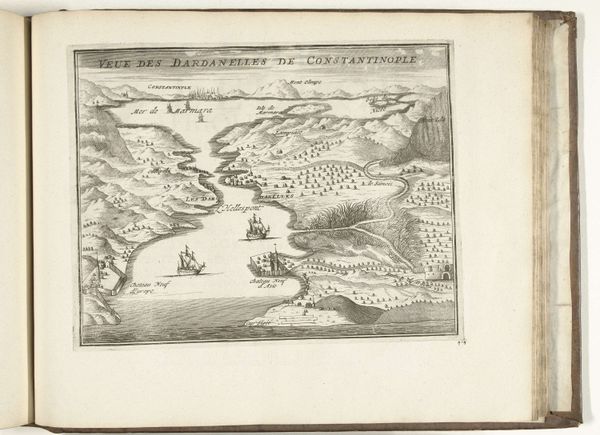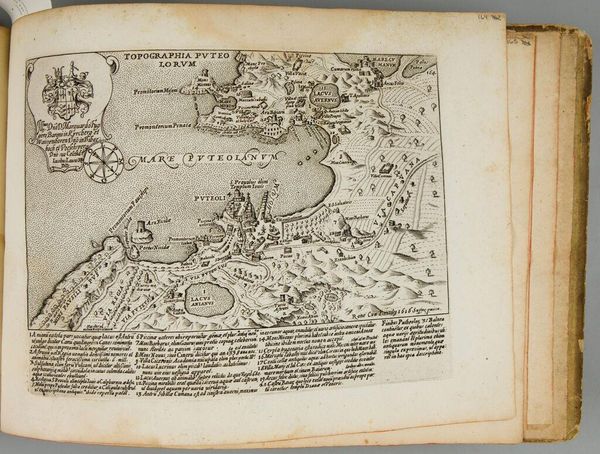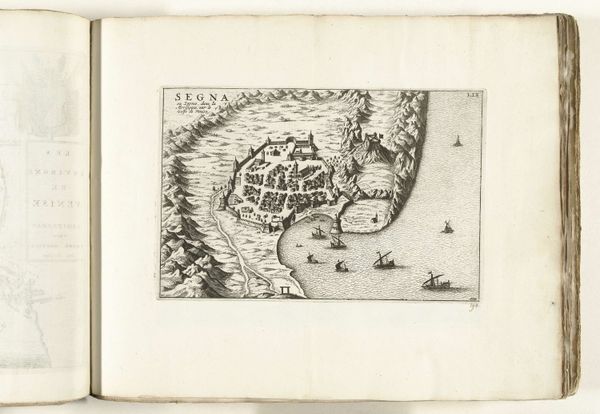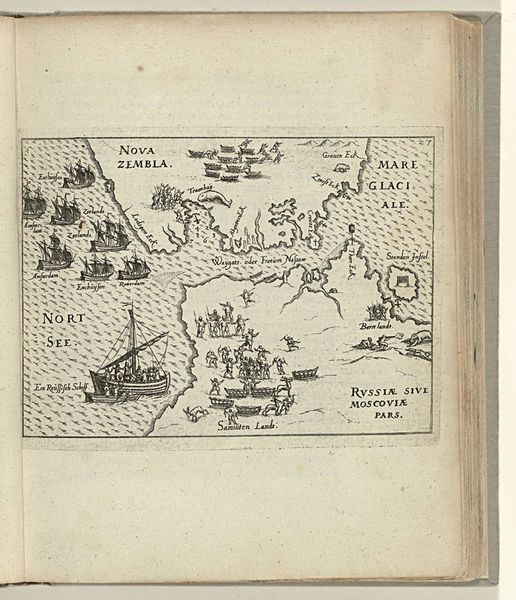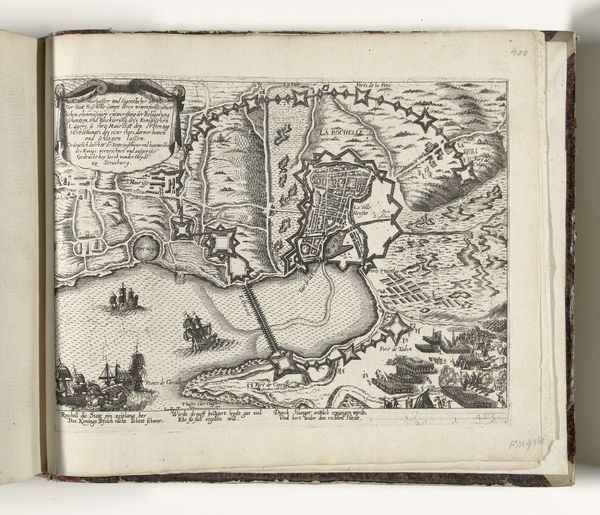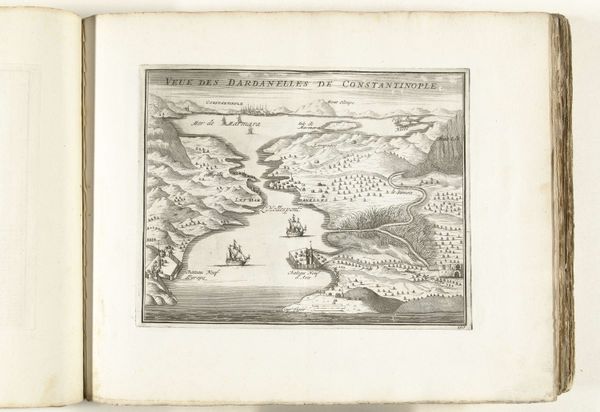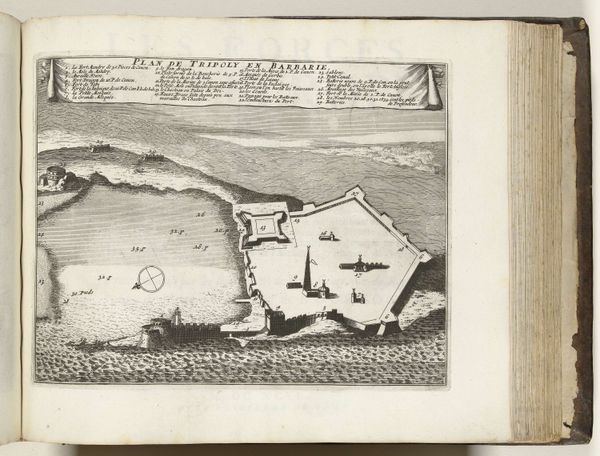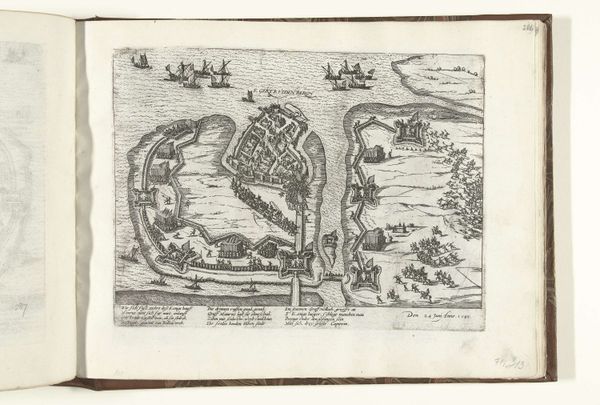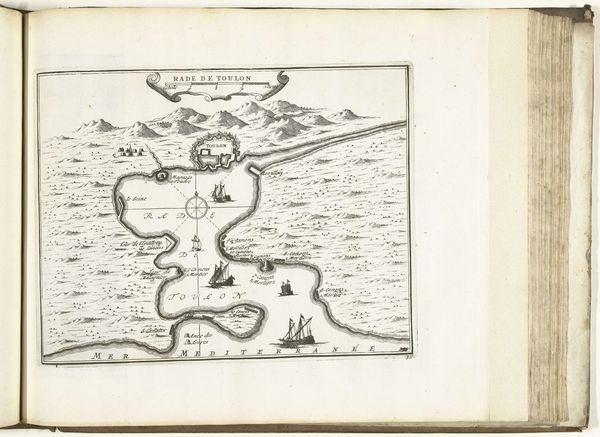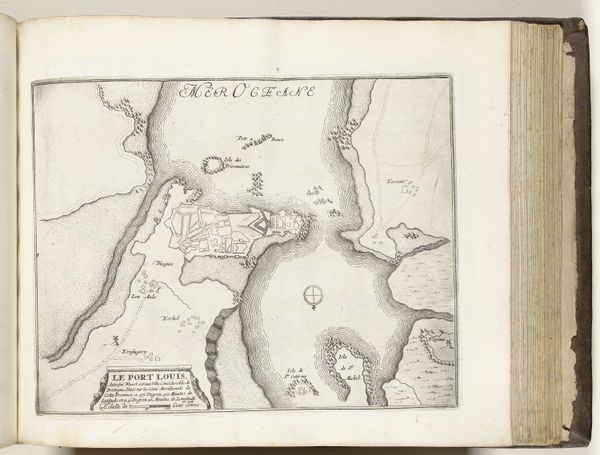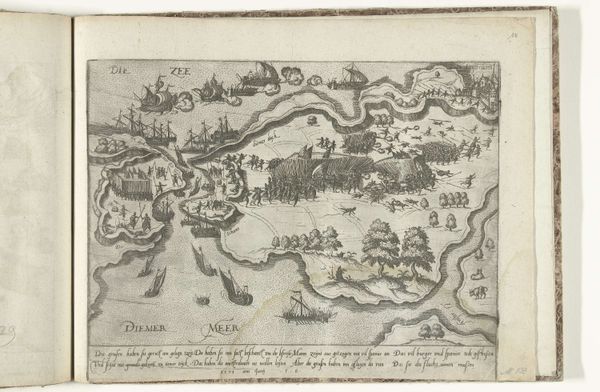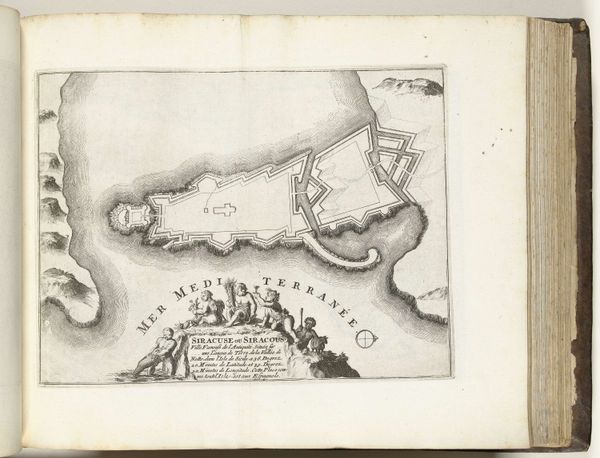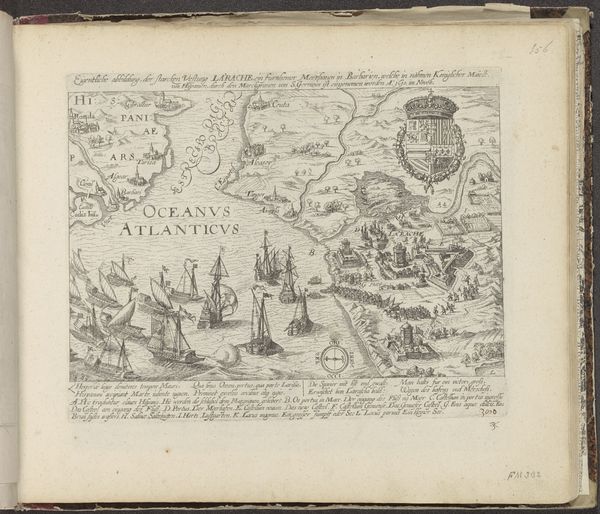
drawing, print, ink, engraving
#
drawing
# print
#
landscape
#
ink
#
cityscape
#
history-painting
#
academic-art
#
engraving
Dimensions: height 226 mm, width 332 mm
Copyright: Rijks Museum: Open Domain
Curator: This engraving, "Kaart van de kust bij Pozzuoli, 1726", shows the coast near Pozzuoli, and it’s held here at the Rijksmuseum. Look at that delicate line work, typical of the period. Editor: Immediately, it feels so alive, despite being an old map. I see tiny, spidery towns nestled among voluptuous hills and that confident, lone ship sailing off into the vast "MER MEDITERRANEE". There's a narrative being suggested even beyond simple geography. Curator: It’s so much more than simple, indeed. Consider that at the time, this region, near Naples, would have been understood through a complex lens of classical history mingling with burgeoning modernity. Think Roman ruins cheek-by-jowl with the seeds of 18th-century urbanity. Editor: And whose "marvels" are these anyway, that this map is so eager to delineate? Are they marvels for conquering eyes, documenting territory to be claimed, or for the traveler, seeking a Grand Tour souvenir? Whose perspective is centered? Curator: Perhaps both. It captures a moment of exploration, classification, and dare I say, aesthetic appreciation. There’s a desire to understand and contain the landscape within a sheet of paper, almost to possess it. Editor: The neat script to the side only reinforces that impulse: a list itemizing the “marvels,” fixing them into a catalogue of assets. It’s part of a colonial project, no? An early form of tourism powered by inequality. Who gets to see, who gets represented, who remains unseen? Curator: Well, certainly, the detailed depiction afforded agency to those who commissioned, used, and profited from these kinds of images, although such artworks contributed greatly to the geographic knowledge of the time. I cannot ignore its clear aesthetic, it does capture my attention so poetically. Editor: Right, I am always so ambivalent. We have to admire craft and technique, while remaining critical of its social function, even three centuries removed. Curator: That tension, I think, keeps these works relevant, ensuring we never look at the past with simplistic eyes. It encourages engagement with its own complexities. Editor: Absolutely. Looking at it this way has reoriented my appreciation, and definitely for the better. Thanks!
Comments
No comments
Be the first to comment and join the conversation on the ultimate creative platform.
